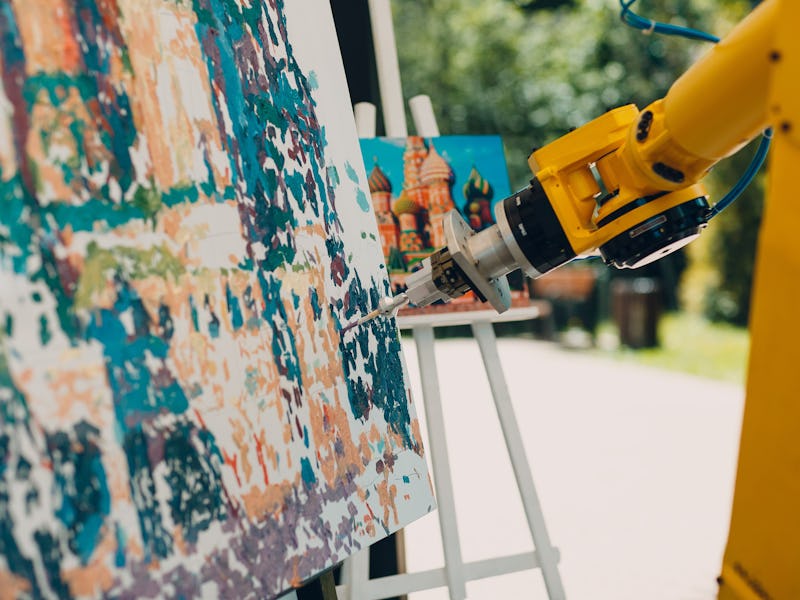Robots might take over this essential human form of expression
They're preparing for their big debut.

Recreating nature with the point of a pen or the flick of a brushstroke is a fundamental privilege of the human experience. Art can create meaning out of chaos. Researchers and philosophers alike point to artistic expression as one of the defining characteristics of humanity.
But human innovation may erase this aspect of our uniqueness.
Robots, created and programed by humans, could soon create masterpieces of their own.
A new study published Wednesday in the journal Frontiers in Robotics and AI details how a team of scientists designed a swarm of tiny, cooperatives robots to work with their human masters to create art.
Together, they can be programed to dance across a canvas at the whim of the human artist. Like dictating an email to your smartphone, this technology would allow an artist to give instructions to robot assistants — and then sit back and watch them go.
Paint by numbers — Programing robots to cooperate with one another to create something new pushes the boundaries of both art and robotics, María Santos, the study's first author, says in a statement.
While computer systems like Google DeepDream paint unnerving picture of artistic robots' future, Santos explains that these robots are instead meant to augment and assist a human painter.
"The multi-robot team can be thought of as an 'active' brush for the human artist to paint with, where the individual robots (the bristles) move over the canvas according to the color specifications provided by the human," Santos says.
Following their commands, these little bots roam around the canvas to create a final image.
All the artist need do to control the swarm is to give a command. But to make the system work, the artist first needs to speak the bots' language.
Back to art school — In the study, a robot swarm consisting of 12 miniature bots roved across an 8-foot by 6.5-foot canvas. The robots themselves are less than 3 inches tall, roughly 4 inches wide, and are capable of painting in the classic printer colors of cyan, magenta, and yellow.
To dictate where the bots roamed on the canvas, all the human artist has to do is describe which spots to paint, and whether to use the three colors they have as is, or to mix colors to create a new shade. Armed with that information, the bots then dance across the canvas, leaving trails of paint behind them.
But there's a catch: The "paint" used in these trials was actually theoretical.
Instead of giving the bots real paint, the researchers instead opted for a more temporary — and perhaps less messy — approach. They used overhead projectors from Santos' university's "Robotarium" to replicate the paint paths instead.
The researchers set the bots to go through various scenarios. In some, they had all the paint they needed, but in others, they didn't. While the robot teams with full paint supplies were better able to complete the design, the researchers say the deprived robot teams were still able to create a final product that closely resembled the input design, too.
What now — As of right now, these paint-less paintings look more like the work of a toddler than an accomplished artist, but the researchers say this is just the beginning of what their robot swarm can do.
In addition to refining their approach to painting — with more detailed inputs as well as actual paint — a technique like this could also be used one day to remotely control a miniature orchestra as well. The age of automation may finally be coming for the art world.
Abstract: In this paper, we present a robotic painting system whereby a team of mobile robots equipped with different color paints create pictorial compositions by leaving trails of color as they move throughout a canvas. We envision this system to be used by an external user who can control the concentration of different colors over the painting by specifying density maps associated with the desired colors over the painting domain, which may vary over time. The robots distribute themselves according to such color densities by means of a heterogeneous distributed coverage control paradigm, whereby only those robots equipped with the appropriate paint will track the corresponding color density function. The painting composition therefore arises as the integration of the motion trajectories of the robots, which lay paint as they move throughout the canvas tracking the color density functions. The proposed interactive painting system is evaluated on a team of mobile robots. Different experimental setups in terms of paint capabilities given to the robots highlight the effects and benefits of considering heterogeneous teams when the painting resources are limited.